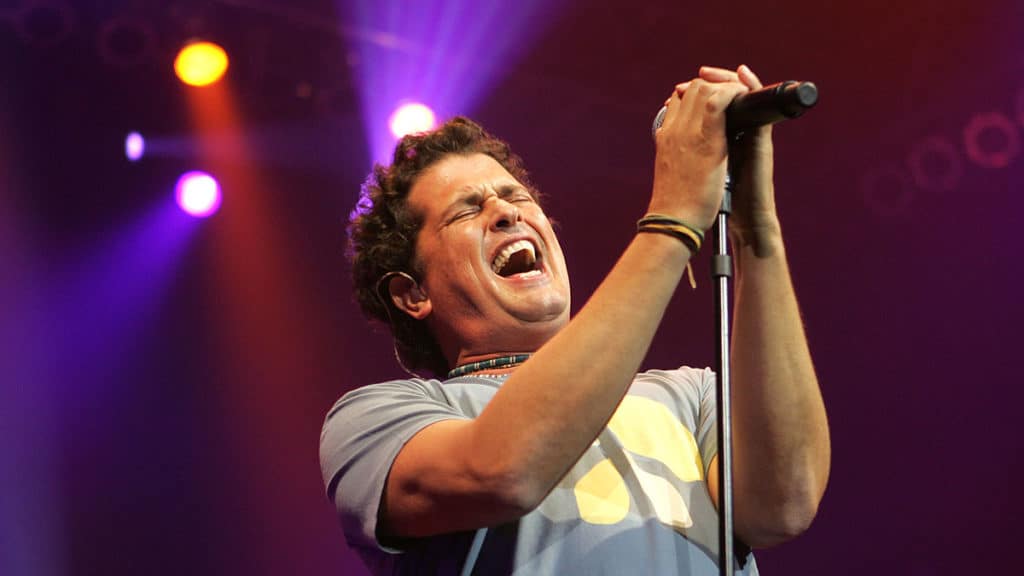Carlos Vives is a Colombian actor and Pop star who popularized Colombian Vallenato Pop music for the new generation. He’s had sort of a charmed life, though he surely worked hard for it.
- Carlos Vives Después de Todo Vives tour brings Colombian Vallenato Pop to Prudential Center in Newark, New Jersey on Saturday, September 17, 2022 at 8pm (7pm doors). From $61. 🇨🇴
Santa Marta and Telenovelas
Vives was born in Santa Marta, Magdalena on Colombia’s Caribbean coast on August 7, 1961. Santa Marta is on the bay opposite Barranquilla. It was the first Spanish colonial city. Many Colombian musicians are from the region.
Colombia has a very rich telenovela tradition that includes very good historical soap operas. Vives started out as telenovela actor and became famous in Colombia as “Gallito Ramírez” (Little Rooster Ramírez) in 1986. He starred as a Caribbean boxer who falls in love with a very conservative girl. She was played by his first wife.
Carlos acted in Puerto Rico for a couple of years in 1989 in the telenovelas “La Otra” (The Other) and “Aventurera” (the Playboy).
Escalona, the Legend
Back in Colombia in 1991, Vives was cast in “Escalona” as legendary vallenato composer Rafael Escalona.
Vallenato is a popular form of accordion music that is related to Colombian cumbia. Cumbia is from the Caribbean coast and Vallenato is from the mountains.
The real Escalona (1926-2009) was a troubadour and one of Colombia’s most famous vallenato composers. He also founded the Vallenato Legend Festival in Valledupar, Cesar, Colombia which is the world’s leading vallenato festival. That land near the border with Venezuela is beautiful.
“Troubadour” may not mean much to American readers, but it is a romantic street music tradition with roots in medieval France and Spain (roughly Catalonia) that is still practiced in Puerto Rico, Cuba, Colombia and other Caribbean lands. It’s Cuban trova which is just like protest folk music of 1960s United States. In a way it’s the beginning of rap because it has the same improvisation and street hustle. There are even competitive traditions that are basically rap battles. It’s very bizarre to watch two old troubadours dis each other on stage. Many New York music traditions are related to the Caribbean.
Vallenato was considered to be music of the campesinos. So it was looked down on. After singing Esalona’s songs in the telenovela, Vives released a pair of soundtrack albums: “Escalona: Un Canto a la Vida” and “Esalona: Vol 2.”
Vallenato Rock
In 1993, Vives made “Clasicos de la Provincia” which fused vallenato with rock and pop influences. The old timers were upset, but the album was a huge hit in Colombia and across the Latin world. His next album “La Tierra del Olvido” (The Land of Forgetting) produced some memorable songs and Vives had a new career.
His 2015 remake of the title song features Colombian music royalty and shows the beauty that is the land of Colombia.
Grammys and Latin Grammys
His “Déjame Entrar” (Let me In) won a 2002 Grammy Award for Best Traditional Tropical Latin Album and a Latin Grammys for Best Contemporary Tropical Album and Best Tropical Song.
Vives has won a bunch Latin Grammys and “Más + Corazón Profundo” (More with Deep Heart) won the Grammy for Best Tropical Latin Album in 2015.
“La Bicicleta” with Shakira may be more familiar to global audiences. It won Latin Grammys for Record of the Year and Song of the Year in 2016.
Carlos Vives, El Papa de Vallenato Nuevo
So Carlos Vives is the guy who updated and renewed vallenato for young audiences. Art forms need to progress or be left behind. That may upset traditionalists, but it’s what keeps tradition alive. Ironically, new forms can only be created with great love and respect for tradition. Perhaps that is the appeal of Carlos Vives.
carlosvives.com
Twitter @carlosvives
Instagram @carlosvives

